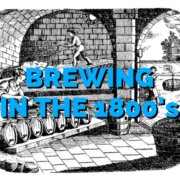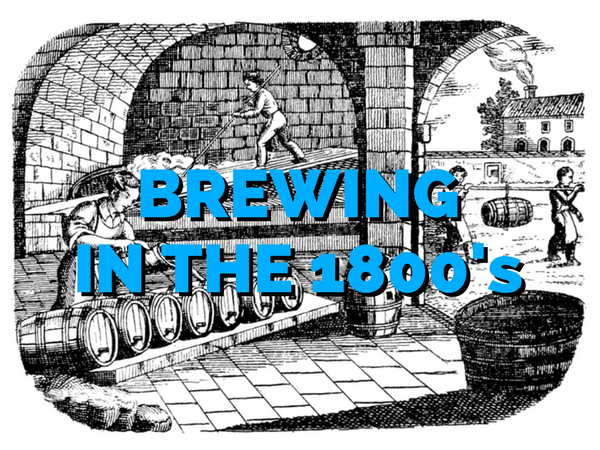How To Make Beer In The 1800’s
One of the fascinating things about beer is the history behind it, brewing techniques are often still the same in principle as used by brewers over 200 years ago. Most of the language used to describe the brewing process is the same as what we would use today.
It’s nice that beer has been around such a long time because it makes the subject something that you can seemingly never stop learning something new about. One of the joys of being a brewer, however, is the chance to make and drink a beer that is not possible to get anywhere else in the world.
Yeah, that’s right, if you think about it the beers you are able to brew are beers that nobody has been able to go into a shop and pub and buy in hundreds and hundreds of years. Think of another example of where history has been so accessible to the average person.
Brewers and beer makers like to document a lot of the stuff they did. This means that brewers today can see what was happening in the brewing industry in 1736 for example. I have always been intrigued by this sort of stuff and one of the best things about historical texts is that they are available for free on the web. What I have done is supply a few links to some of the ones I thought were pretty interesting. There are loads of books available online so if you find some then let me know.
Table of Contents
The London and Country Brewer (1736)
The many Inhabitants of Cities and Towns, as well as Travellers, that have for a long time suffered great Prejudices from unwholsome and unpleasant Beers and Ales, by the badness of Malts, underboiling the Worts, mixing injurious Ingredients, the unskilfulness of the Brewer, and the great Expense that Families have been at in buying them clogg’d with a heavy Excise, has moved me to undertake the writing of this Treatise on Brewing, Wherein I have endeavour’d to set in sight the many advantages of Body and Purse that may arise from a due Knowledge and Management in Brewing Malt Liquors, which are of the greatest Importance, as they are in a considerable degree our Nourishment and the common Diluters of our Food; so that on their goodness depends very much the Health and Longevity of the Body.
The Theory and Practice of Brewing (1804)
The intent of every brewer, when he forms his drink, is to extract the fermentable parts of the malt, in the most perfect manner ; to add hops, in such proportion as experience teaches him will preserve and ameliorate the beer ; and to employ just so much yeast as is sufficient to obtain a complete fermentation.
The Theory & Practice of Brewing
The Microscope In The Brewery And Malt-House (1889)
At various stages in the Brewing process we can, by the aid of the microscope, determine the presence of organisms of various kinds
The Microscope In The Brewery & The Malt House
A Practical Treatise on Brewing (1835)
The chief art in mashing, is to produce from the malt the greatest quantity of matter which is capable of adding to the flavour and strength of the beer; and this depends principally on the temperature of the liquor employed in making the first mash liquor being the technical word used by brewers to de-note water. The old rule used to be, to let the liquor cool until you could see your face reflected from the surface; this, however, is a very uncertain guide. The thermometer removes all doubt.
A Practical Treatise on Brewing
As you can see brewing a couple of hundred years ago isn’t that much different to brewing today. It still requires the same ingredients, the same basic equipment and a little bit of time and practice. If you want to check out a more recent guide to home brewing however then read through some of the home brewing guides here.





Leave a Reply
Want to join the discussion?Feel free to contribute!